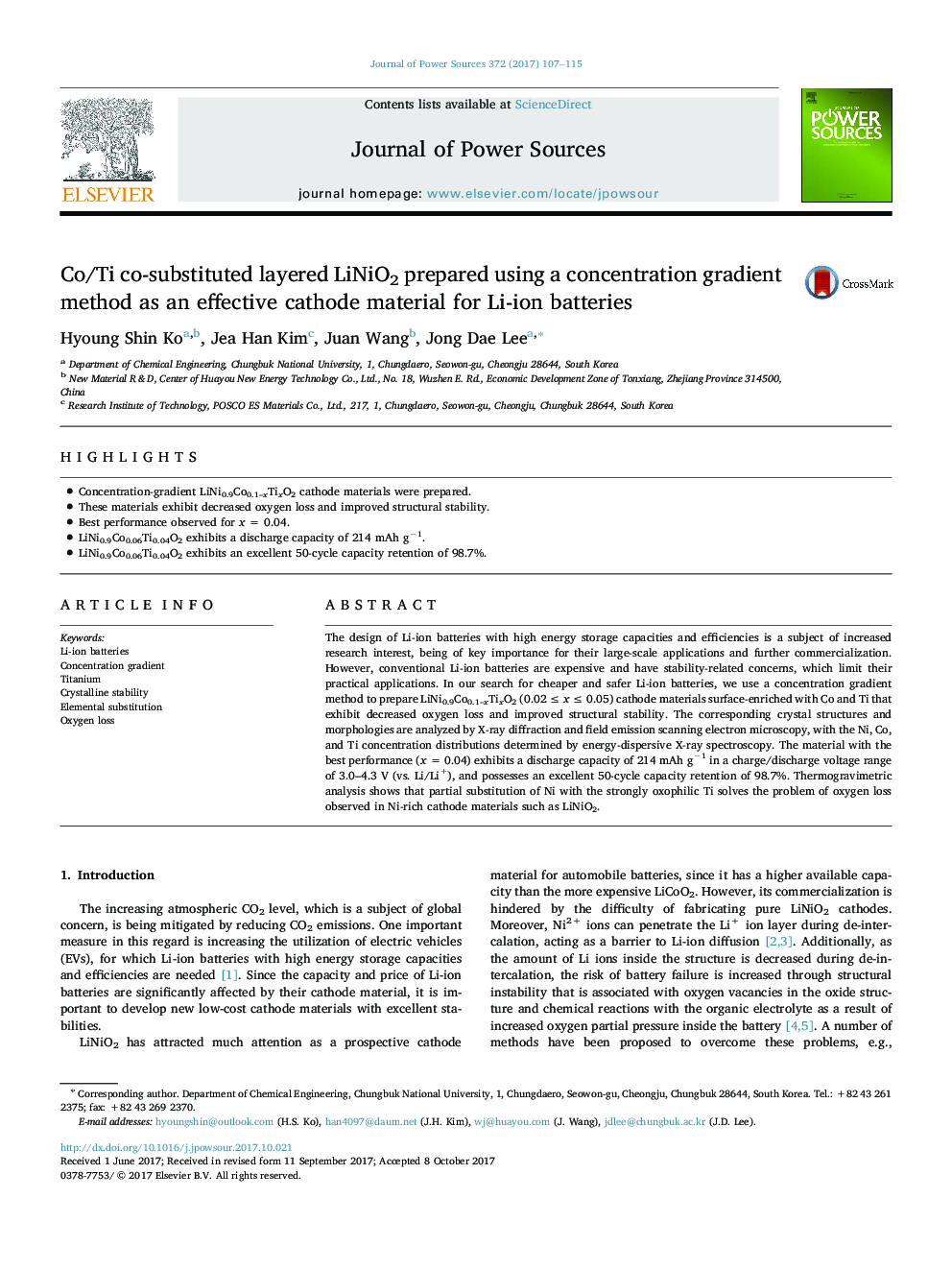| Article ID | Journal | Published Year | Pages | File Type |
|---|---|---|---|---|
| 7726460 | Journal of Power Sources | 2017 | 9 Pages |
Abstract
The design of Li-ion batteries with high energy storage capacities and efficiencies is a subject of increased research interest, being of key importance for their large-scale applications and further commercialization. However, conventional Li-ion batteries are expensive and have stability-related concerns, which limit their practical applications. In our search for cheaper and safer Li-ion batteries, we use a concentration gradient method to prepare LiNi0.9Co0.1-xTixO2 (0.02 â¤Â x â¤Â 0.05) cathode materials surface-enriched with Co and Ti that exhibit decreased oxygen loss and improved structural stability. The corresponding crystal structures and morphologies are analyzed by X-ray diffraction and field emission scanning electron microscopy, with the Ni, Co, and Ti concentration distributions determined by energy-dispersive X-ray spectroscopy. The material with the best performance (x = 0.04) exhibits a discharge capacity of 214 mAh gâ1 in a charge/discharge voltage range of 3.0-4.3 V (vs. Li/Li+), and possesses an excellent 50-cycle capacity retention of 98.7%. Thermogravimetric analysis shows that partial substitution of Ni with the strongly oxophilic Ti solves the problem of oxygen loss observed in Ni-rich cathode materials such as LiNiO2.
Related Topics
Physical Sciences and Engineering
Chemistry
Electrochemistry
Authors
Hyoung Shin Ko, Jea Han Kim, Juan Wang, Jong Dae Lee,
